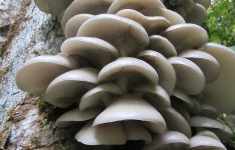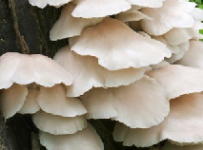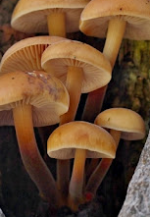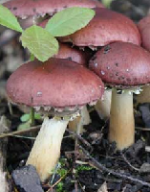Gray Oyster Mushroom (Pleurotus ostreatus)
are distributed in most mainland Europe, in parts of North America and in much of Asia, including Japan.
Pleurotus ostreatus occurs in deciduous forests and along rivers, usually on dead standing trees or on fallen logs. Pleurotus ostreatus is often found on beech stumps. There are several types of mushrooms that a layman can confuse it with. I recommend studying these species depending on where you live.
This mushroom is widely used in East Asian cuisine as a traditional delicacy and medicine. It is used baked with vegetables, excellent is fried separately, or on strips with a mixture of vegetables, in soups and excellent sauces, or even raw in salads.
Oyster Mushroom is the easiest to grow on logs. The harvest is usually large and can take up to 7 years on one log. The most suitable woody plants for growing are beech, aspen, birch, poplar, willow and apple tree.
are distributed in most mainland Europe, in parts of North America and in much of Asia, including Japan.
Pleurotus ostreatus occurs in deciduous forests and along rivers, usually on dead standing trees or on fallen logs. Pleurotus ostreatus is often found on beech stumps. There are several types of mushrooms that a layman can confuse it with. I recommend studying these species depending on where you live.
This mushroom is widely used in East Asian cuisine as a traditional delicacy and medicine. It is used baked with vegetables, excellent is fried separately, or on strips with a mixture of vegetables, in soups and excellent sauces, or even raw in salads.
Oyster Mushroom is the easiest to grow on logs. The harvest is usually large and can take up to 7 years on one log. The most suitable woody plants for growing are beech, aspen, birch, poplar, willow and apple tree.






